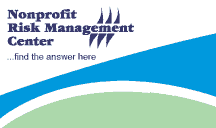|
October 7, 2009
The Role of Resilience in Risk Management
By Melanie Lockwood Herman
As consultants to diverse organizations we encounter dedicated leaders and the nonprofits they serve at various stages of their respective risk management journeys. On one day we may consult with the board of a nonprofit considering the risks and rewards of a significant change in governance or structure (e.g., a merger with another group). Later in the week we may find ourselves advising the leadership team of a nonprofit that is trying to protect its reputation and staff morale in the aftermath of allegations of misconduct by a long-time volunteer. Wherever we find a particular organization, we always remind our clients that sound risk management requires more than the ability to imagine a wide range of future scenarios; it requires planning to survive the circumstances that no one (including an experienced risk management consultant!) is able to predict with absolute precision.
The October 3, 2009 edition of The Economist features a provocative look at world economic conditions in a special report titled “The Long Climb.” The report, authored by Simon Cox, offers several lessons about risk taking that can be applied to the world of nonprofit risk management. I’ve selected two concepts from the article and a third from the work of author David Apgar and offer my interpretations below.
String Theory
Cox reminds the reader of the work of Milton Friedman, whose theories included the idea that “in America deep recessions are generally followed by strong recoveries.” This economic theory likens market behavior to a piece of stretched string… the greater the force in plucking the string the more it snaps back. Cox reminds us however, that the snap back may well be less than Friedman led us to suspect. There may be no return to normal, as normal has changed! And any change may well be an opportunity to rebound to well beyond “normal.”
The discussion of the string theory and the world economy got me thinking about nonprofits that have and will be again in the future tested to the limit. Although an effective governance structure and strong financial management framework are widely viewed as important goals in a nonprofit, weaknesses in these elements of your operations may not be visible to every stakeholder group. And the willingness to spend financial and other resources to shore up the foundation of your nonprofit may wane when resources for service delivery are under pressure.
I recently experienced this first hand when a client nonprofit elected to delay board training due to the press of programmatic priorities. Within weeks after the decision was made a member of the board took action that suggests a violation of the
duty of loyalty. Upon hearing of the crisis caused by the board member’s action it occurred to me that the board training that was regarded as a luxury was actually an unrecognized necessity. The programmatic success of this particular nonprofit will continue to be hampered by the lack of a clear understanding of the board’s basic legal duties.
Enlightened leaders recognize that fortifying the foundation of the organization—its governance, financial management, risk management, and personnel practices—injects strength and elasticity into the nonprofit that it will no doubt require in a crisis. Not every organization will survive or thrive after being tested by a financial, reputation or other crisis. It is the Center’s view that organizations that recognize the importance of a solid foundation and commit to improving governance and management processes are in the best possible position to make effective mid-course corrections when circumstances force the organization off the road and onto the rumble strips.
Rubber Coating May Be Preferable to a Crystal Ball
In the final section of the special report in The Economist, Cox reminds the reader of the work of author Aaron Wildavesky, who wrote that resilience was sometimes a greater virtue than prescience. Cox writes, “Not every danger can be foreseen, and even if it can be predicted it cannot always be averted." This is, of course, a vital truism in the world of nonprofit risk management, and as my colleague Felix Kloman contends, the “very soul of the risk management discipline”—the ability to bounce back from the unexpected without breaking. Or in the world of nonprofit service delivery, to rebound from the unexpected without letting client needs slip through the cracks or the mission and reputation of the nonprofit go unattended.
The Myth of Absolute Risks
Leaders of nonprofit organizations will never be in position to imagine every danger that lies in the immediate or distant paths of their organizations. This concept is explored by author David Apgar who cautions us against obsession with identifying each and every risk we face in his writing on “the myth of absolute risks.” Apgar reminds us that there is no fixed set of discoverable risks. No amount of brainstorming or help from an experienced consultant will unearth a complete set of risks facing a community-serving nonprofit. Why? The risks facing an organization are like a constantly adapting organism; while attention is paid to one issue the measure of the likelihood, consequences and timing of some future event or situation may be changing. Risk changes as our knowledge changes, others react to their own measures and as new information surfaces.
In some cases the very effort to predict the future sets the dangerous illusory process in motion, arguably diminishing our ability to recover (bounce) from the risks that will materialize. "Too much faith in foresight," argues Simon Cox, leads us to "neglect the simpler quality of resilience."
I concur with my colleague Felix Kloman who argues that “the proper goal of risk management is to build and maintain the confidence of stakeholders.” As Felix aptly points out, “that combined confidence and trust is often translated into much-needed support, financial and otherwise, when surprise inevitably hits. It is the essence of resilience.”
The Center offers a number of online and published resources to help nonprofits build their elasticity and protect their missions. Several of our latest offerings include:
My Financial Management Plan—This new online tool helps leaders turn disparate elements of a financial management system into an integrated plan that will support informed decision making. With 21 modules the system is robust AND easy to use. This brand-new tool is available for $239 at www.MyFinancialManagementPlan.org.
Ready…or Not: A Guide to Risk Management for Nonprofit Executives—This brand-new book invites the reader to examine risk taking, risk communication, and organizational culture from a variety of perspectives. To learn more or order a copy for your risk management library, visit: http://nonprofitrisk.org/store/ready_or_not.shtml.
Exposed: A Legal Field Guide for Nonprofit Executives—The Center’s brand-new text on legal issues was written for non-lawyers. Your exposure to legal claims may be greater or lesser than imagined. Exposed helps you sort through the language of the legal profession and evaluate your nonprofit’s exposures and strategies for managing the risk of legal trouble. For more information or to order a copy of the book, visit: http://nonprofitrisk.org/store/exposed.shtml.
|


